When planning what annuals I want in my garden, calendula is a no-brainer addition. It’s a staple in my herbal apothecary, being a powerful wound healer and an amazing skincare herb. And did I mention the sunny yellow flowers are also a stunning ornamental? Here’s everything you need to know about planting calendula and harvesting it for recipes.
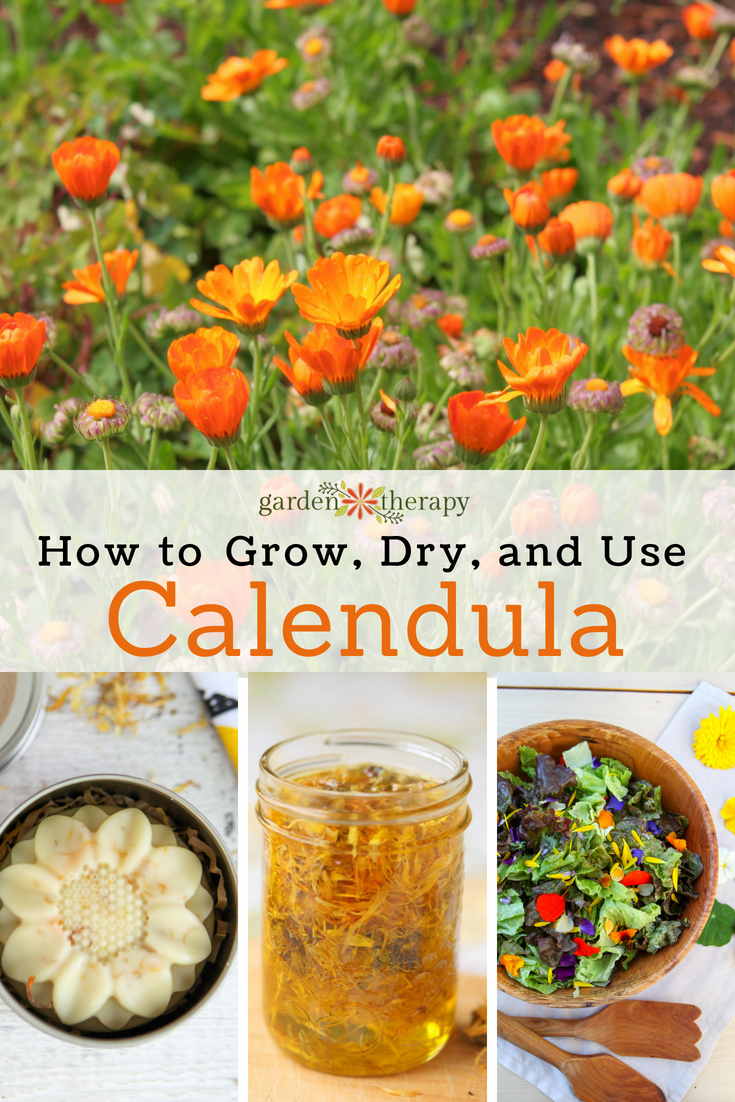
There are a lot of great reasons to grow calendula. In addition to their bright orange and yellow daisy-like blooms which bring cheer to the garden, planting calendula attracts good insects like bees and butterflies while deterring unwanted pests.
But most importantly, calendula has a long-standing reputation as a natural anti-inflammatory skin care treatment. It’s easy to grow, harvest, and dry in the home garden and beneficial for use in recipes and DIY beauty products, a practice that dates back to ancient history.
This post will cover…
- Meet the Calendula Flower!
- Calendula Benefits
- How to Grow Calendula from Seed
- Calendula Flower Maintenance
- Calendula for Companion Planting
- How to Harvest and Dry Calendula
- Calendula Uses
- Frequently Asked Questions About Growing Calendula
- More Tips for Growing Herbs
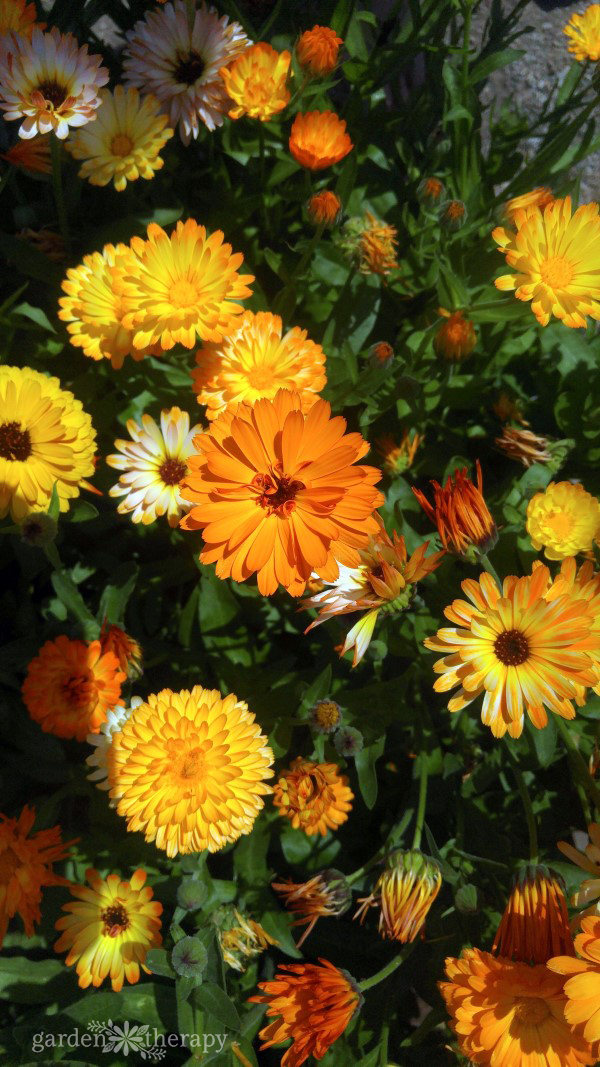
Meet the Calendula Flower!
Calendula (Calendula officinalis) is part of the daisy family, Asteraceae, and also goes by the name pot marigolds. While often called marigolds, they are not the same species of marigolds that you often find at the garden centre, Tagetes.
The calendula flowers open in the day, and close at night as the sun sets. Culpeper called the flower, “An herb of the sun.” And the bright yellow and orange hues sure feel like a bucket of sunshine in the garden.
The flowers bloom from spring to fall as long as you continuously deadhead them. The stalk will support many branches and flowers with oblong leaves. The plant has a signature sticky feeling, thanks to the resin and other constituents in it.
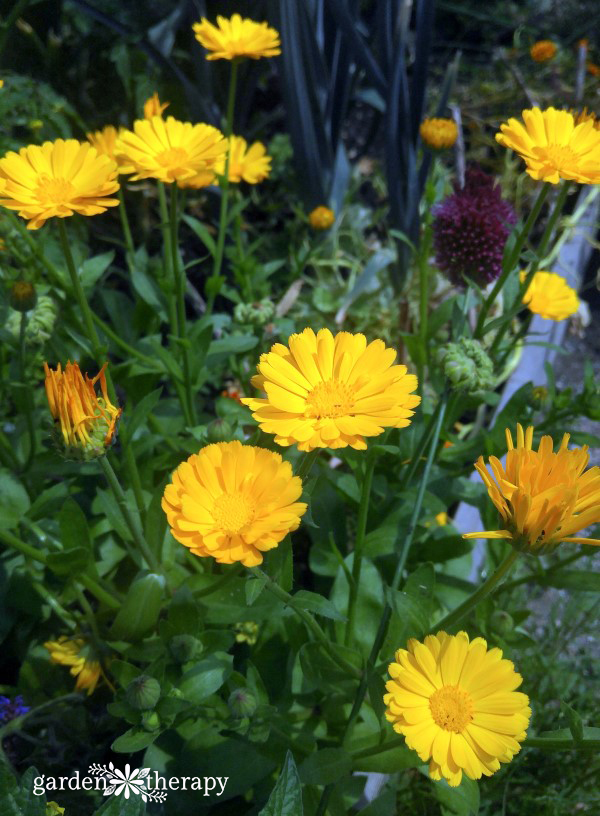
Calendula Benefits
Calendula is often harvested to use in tea, tinctures, and oil and vinegar infusions. The early Greeks and Romans used to drink calendula tea for upset stomachs as well as adding the flower to soups and stews to improve digestion. The bright hues were often used to dye fabrics and cosmetics.
Most commonly, and historically, Calendula is used in salves, ointments, or as a poultice for treating wounds. It has antibiotic, anti-inflammatory, hemostatic, and tissue healing properties to use for scrapes, cuts, burns, rashes, bruises, bites, itchiness, sunburns, and fungal skin infections. The salicylic acid in the calendula also helps relieve the pain.
When taken internally, it’s great for the digestive system and is known to support the gallbladder and the liver. Thanks to its antibacterial and antiviral properties, it can also work as an immune stimulant. When hot, it works as a diaphoretic by stimulating circulation and sweating.
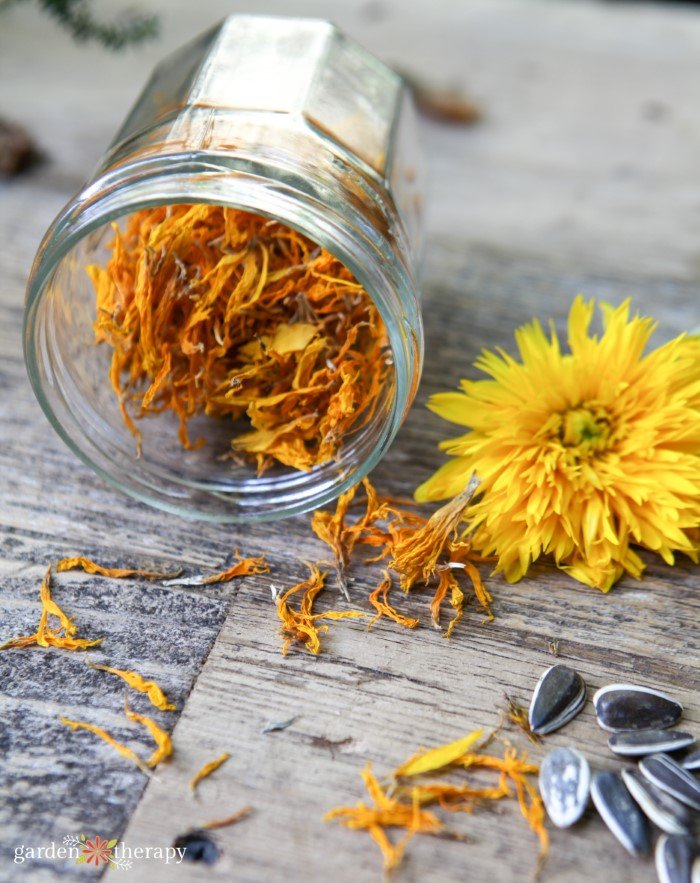
How to Grow Calendula from Seed
Calendula can easily be started from seed, either indoors or out. To sow the seeds outdoors, the best time to plant them depends on what type of climate you live in, but a good rule of thumb is to plant them just after the last frost of the season.
When planting calendula indoors, plant them approximately 8 weeks before you plan to move them outside into the garden and allow them to germinate in the dark for a week or two.
Plant the seeds about ¼” deep. Dwarf calendula should be spaced 8” apart, while the taller varieties should be about 20” apart.
When growing calendula, the plant likes lots of sunlight and can become leggy if they do not get enough, so plant them somewhere bright but not extremely hot.
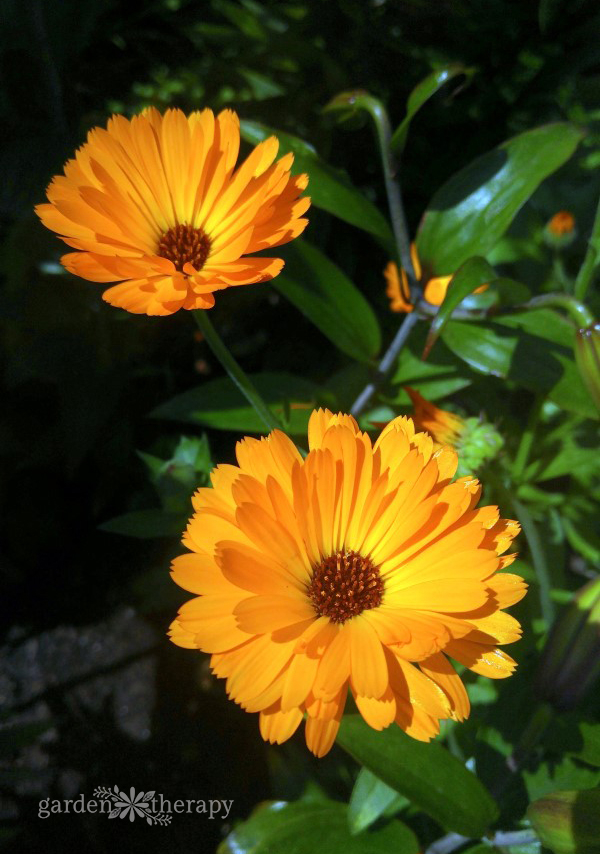
Calendula Flower Maintenance
During the hottest time of the year, water calendula once a week to keep them perky and encourage blooming. Otherwise, calendula can survive in dry conditions.
Deadhead old flowers regularly to promote new growth, and if the plant begins to look wilted or otherwise unhealthy, cut it back quite drastically. It will come back healthier and bloom later in the year.
Calendula can fall victim to powdery mildew, a fungal disease that can be identified by white patches on foliage. Remove the affected area of the plant as soon as you notice it and dispose of it to prevent the disease from spreading.
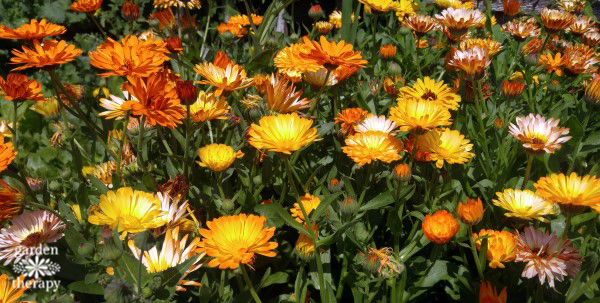
Calendula for Companion Planting
Many gardeners grow calendula in the vegetable garden to attract pollinators and repel pests. Calendula contains the phototoxin alpha-terthienyl, which protects against root-eating nematodes. Nematode-susceptible tomatoes do very well with companion-planted calendula.
To deter cabbage worms, you can also plant calendula near cruciferous vegetables such as cabbage, cauliflower, broccoli, and Brussels sprouts. These fragrant flowers are also reported to mask the scent of the vegetables, protecting them from veggie-sniffing insects far and wide.
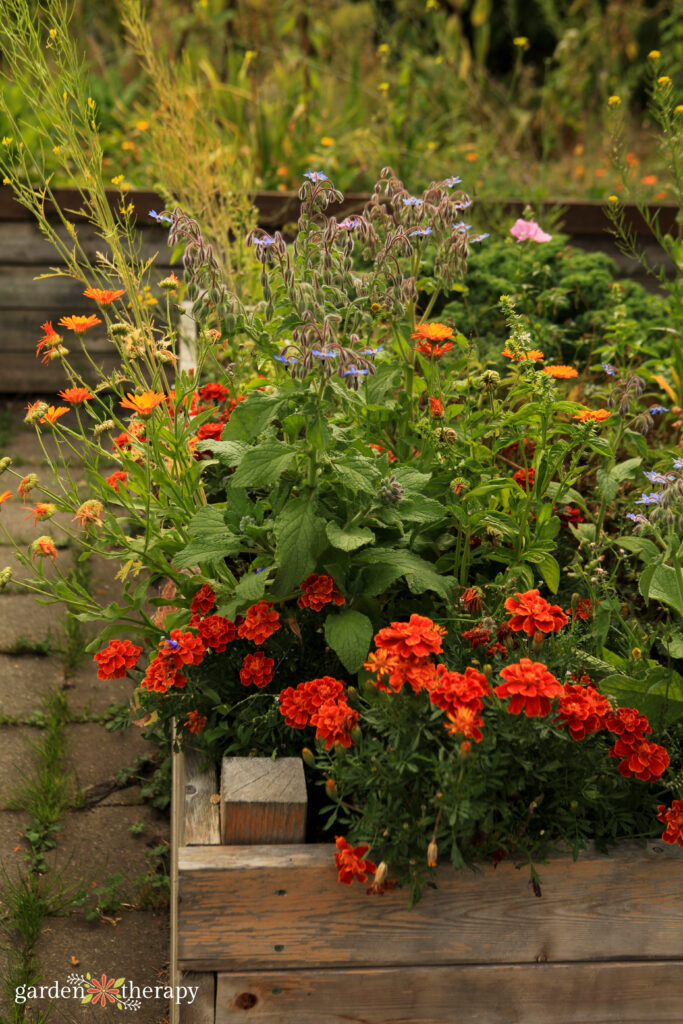
How to Harvest and Dry Calendula
Organically-grown calendula flowers are the gold standard for medicinal plants, so you will probably want to preserve some for home use.
You can get lots of blooms to harvest spring through fall, as long as you make sure to keep snipping the flowers to harvest. The fresh or dried florets are typically used for medicinal reasons, but it’s time-consuming to pick them all, so most people pick the petals.
Harvest flowers when fully open and spread them out on a screen or in a shallow basket to dry. They are ready when the petals feel papery to the touch. Store them in an airtight jar and use them in natural beauty recipes or tea.
I also like to let some calendula flowers go to seed, where they form thick, crescent-shaped seeds. They’re easy to collect and save for next year’s crop.
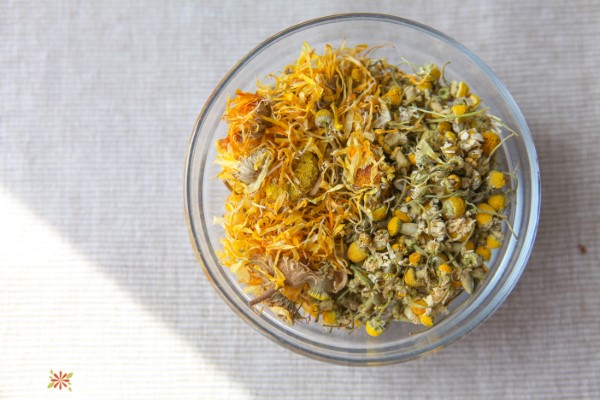
Calendula Uses
I’m a super fan of calendula, so I have lots of beauty and medicinal recipes that I use calendula in. For many of my recipes, I infuse dried calendula into oil. I have step-by-step instructions for infusing calendula flowers, either using the cold or hot infusion method.
Calendula is also an edible flower, so you can also use the flowers fresh as cake decorations or add the petals to a fresh salad.
Here are some of the recipes on Garden Therapy that include calendula flowers:
- Naturally Treat Cuts and Scrapes with this Homemade Calendula Salve
- Healing Calendula Lip Balm for Chapped Lips
- Calendula Lotion Bars for Soothing Summer Skin
- Homemade Cheery Sunflower and Calendula Soap
- Three Ways to Make Herbal Oils for Natural Beauty Recipes
- Homemade After Sun Salve Recipe
- Herbal Anti-Flea Dog Shampoo Recipe
- Ultra Healing Foot Balm
- Plant a Mosquito-Repelling Container Garden to Protect Entertaining Spaces
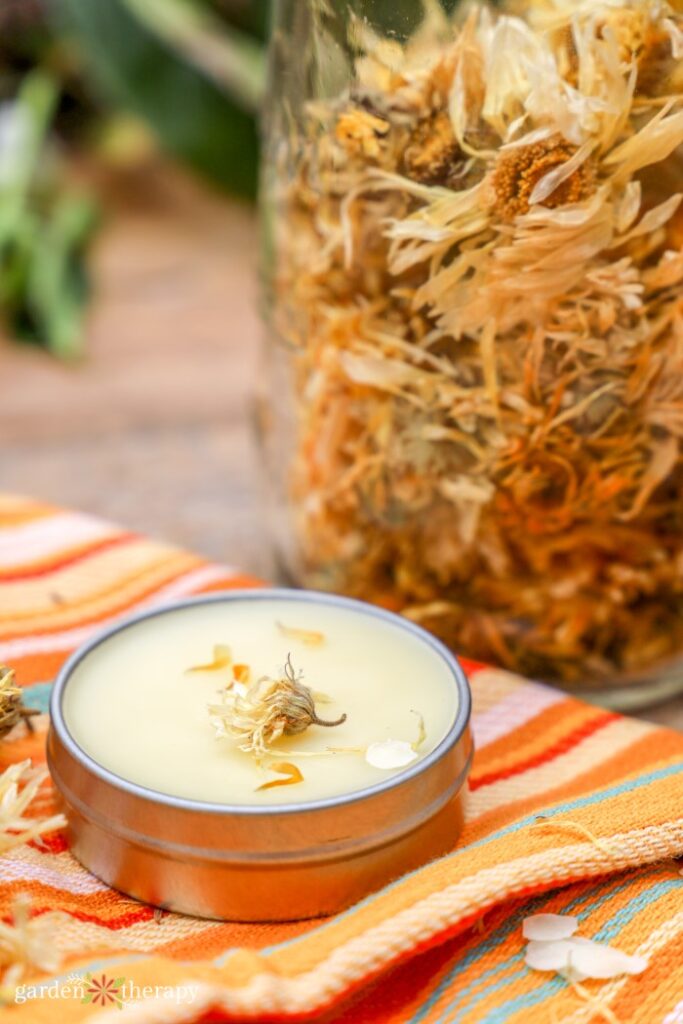
Frequently Asked Questions About Growing Calendula
Calendula is an annual. The best way to ensure that you have calendula for next year is to let some of your calendula flower heads go to seed at the end of the season. These will turn into crescent-shaped seeds you can store and plant in the spring.
Yes! Calendula has a slightly bitter taste that can lean toward spicy or tangy. It’s highly pigmented, so it can also give food a yellow tint.
Generally, calendula is safe for dogs and other animals. Like most plants, if a dog eats lots of the plant, it may get an upset stomach. Calendula is also used to promote contractions during pregnancy, which can happen for humans and animals if ingested.
Pop off the heads of the calendula and discard the stems. Lay out the calendula on a tray, drying rack, or dish and wait for them to dry. Place them outside of direct sunlight and humid conditions. You can store the petals in an airtight container when they feel papery.
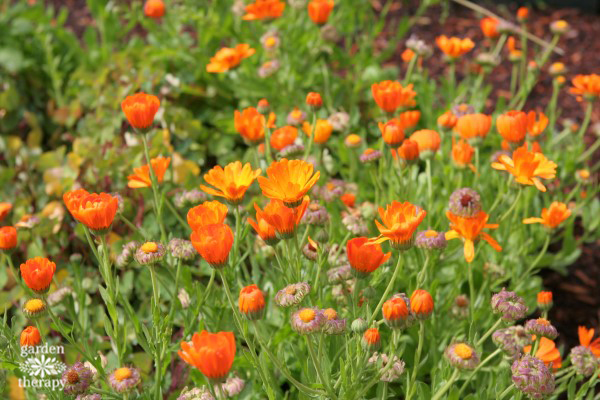

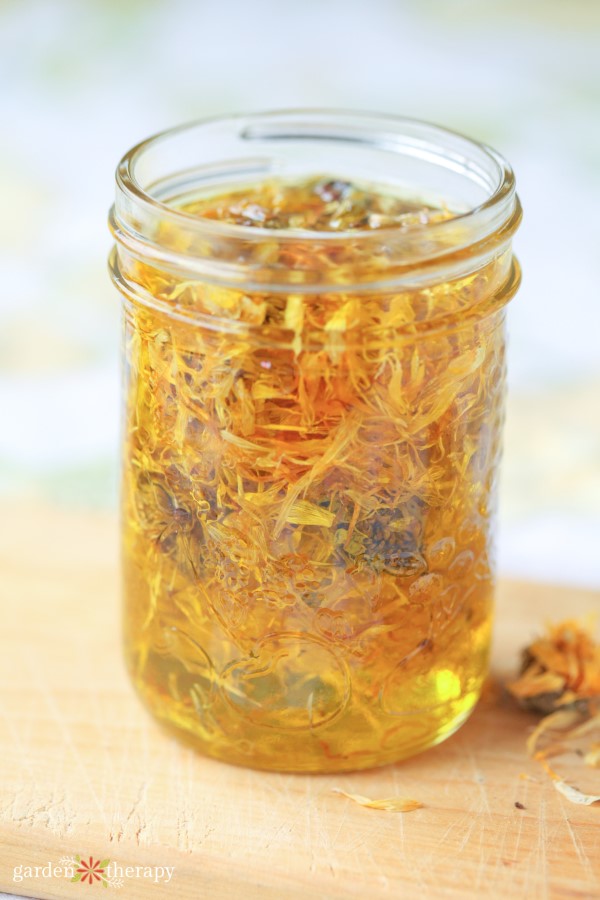
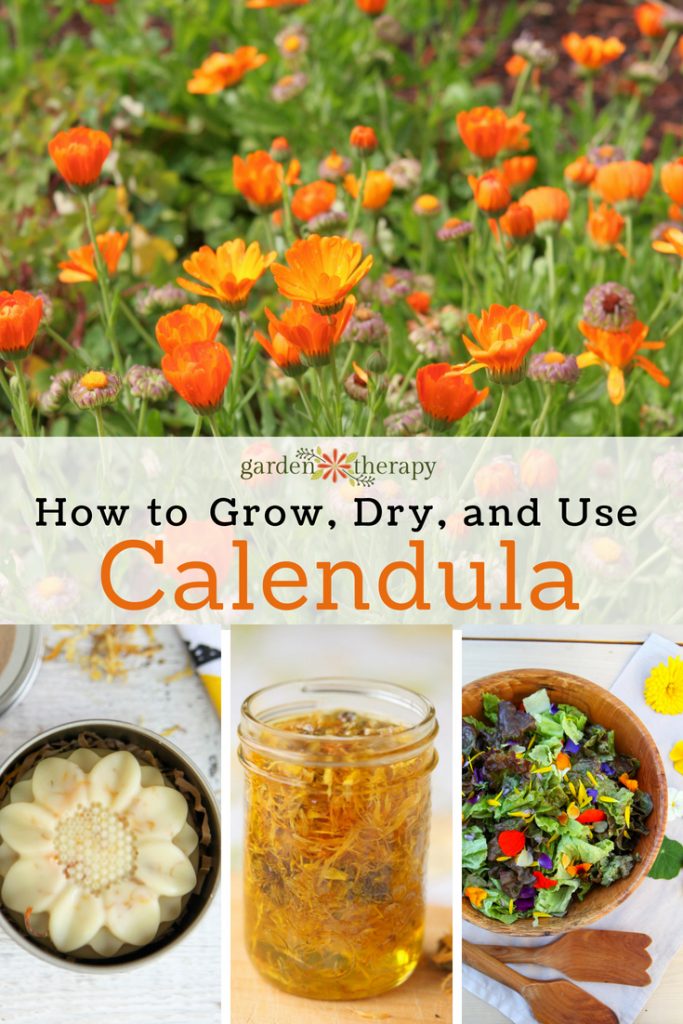
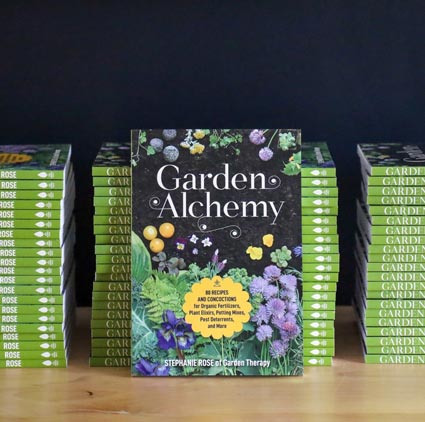


I am a big fan of calendula-mostly as a flower in my garden, but I do use calendula oil to treat minor abrasions and find that it works quite well! Your photos are gorgeous and I am finding myself envious of your garden.
I have grown calendula plant in my garden and it looks very beautiful. You have shared such a nice tips on calendula with growing tips and beautiful images. Keep sharing such an informative articles
Seed Question: How about the small tightly curved dark inner ones? Are they seeds and are they more or less viable then the outer larger lighter spiky seeds?
Hi Julie, The seeds I plant for calendula come from many unique varieties and I find that the seeds can look very different. Some are small and dark as you say, while others are the larger shell-like spikey light coloured ones. I would think that if you are getting different looking seeds it could be from different varieties. To test the viability of your particular seeds, why not do a germination test? Put 10 seeds in a damp paper towel and put that in plastic someplace warm. Check daily for germination and log the results of how many of the 10 were viable.
OMGGG! That PUZZLE! So awesome, yet so hard! I’m ashamed to say it took me 150 moves to open it! Such a fun idea!
I lOVE the Puzzles. This one only took me 28 moves. Thank you. Good challenges.